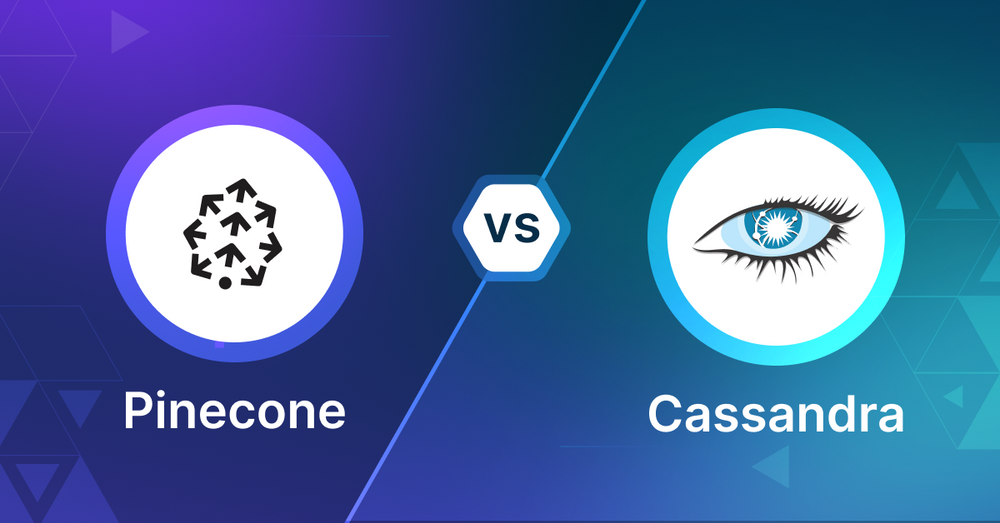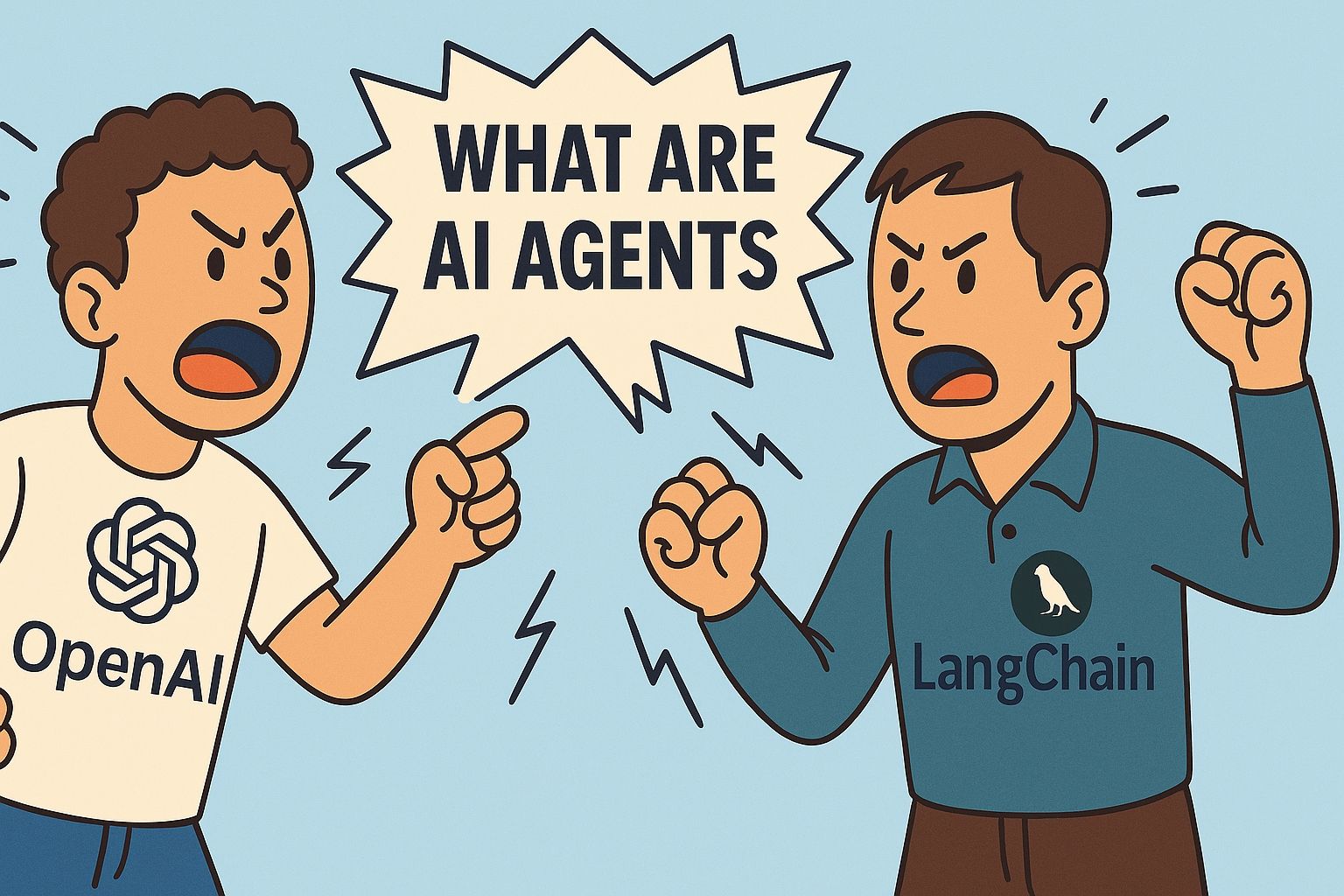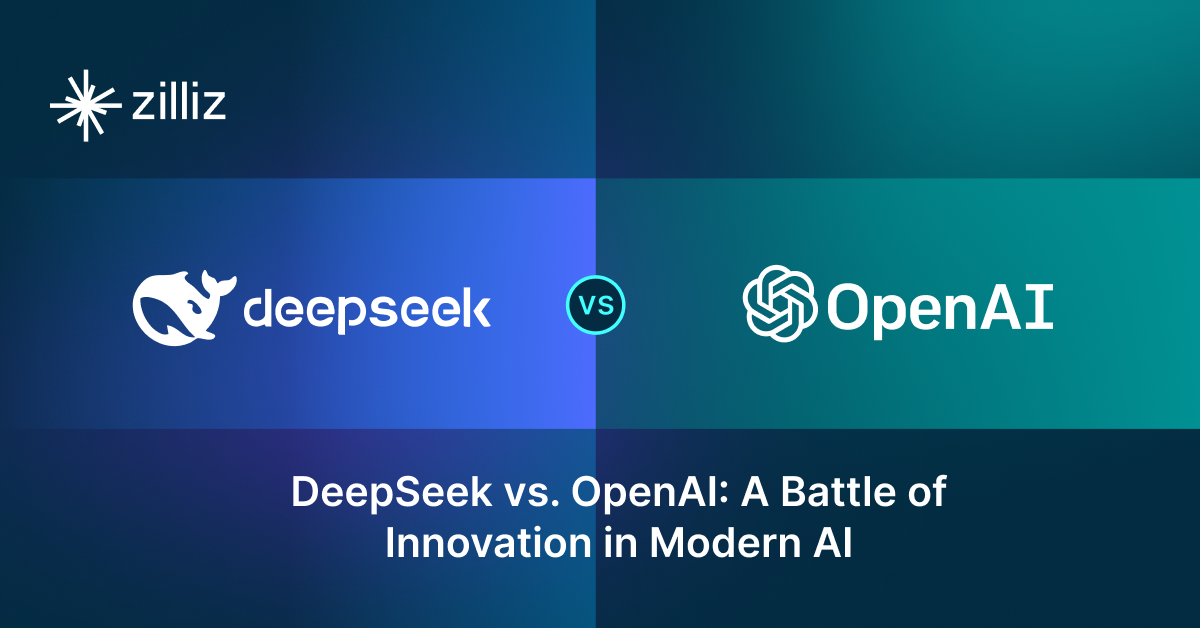Apache Cassandra vs Pinecone: Choosing Your Vector Database

AI and data-driven search are changing how we build apps. Vector databases are a big part of this change. If you're picking a vector database, you might be looking at Apache Cassandra and Pinecone. This article will help you compare them.
What is a Vector Database?
Before we compare Apache Cassandra and Pinecone, let's first explore the concept of vector databases.
A vector database is specifically designed to store and query high-dimensional vectors, which are numerical representations of unstructured data. These vectors encode complex information, such as the semantic meaning of text, the visual features of images, or product attributes. By enabling efficient similarity searches, vector databases play a pivotal role in AI applications, allowing for more advanced data analysis and retrieval.
Common use cases for vector databases include e-commerce product recommendations, content discovery platforms, anomaly detection in cybersecurity, medical image analysis, and natural language processing (NLP) tasks. They also play a crucial role in Retrieval Augmented Generation (RAG), a technique that enhances the performance of large language models (LLMs) by providing external knowledge to reduce issues like AI hallucinations.
There are many types of vector databases available in the market, including:
- Purpose-built vector databases such as Milvus, Zilliz Cloud (fully managed Milvus), and Weaviate
- Vector search libraries such as Faiss and Annoy.
- Lightweight vector databases such as Chroma and Milvus Lite.
- Traditional databases with vector search add-ons capable of performing small-scale vector searches.
Cassandra and Pinecone represent different approaches to vector databases. Cassandra is a traditional database that has evolved to include vector search capabilities and Pinecone, on the other hand, is a purpose-built vector SaaS. It was designed from the ground up to handle vector data and perform similarity searches efficiently. As a specialized solution, Pinecone focuses exclusively on vector operations and is optimized for tasks like similarity search and recommendations.
Apache Cassandra: The Basics
Apache Cassandra is an open-source database. This is a big deal for many developers because it means you can see and modify the code, contribute to its development, and avoid vendor lock-in. Cassandra is good at handling lots of data across many computers. It's known for being always available and scaling well. With version 5.0, Cassandra now supports vector search.
Cassandra is a distributed system that works across many computers. It's highly available, meaning it's always up and running. It's scalable, so you can handle more data by adding more computers. Cassandra offers tunable consistency, letting you choose how up-to-date the data needs to be. It also has a flexible data model.
Cassandra's vector search uses something called Storage-Attached Indexes (SAI). SAI helps Cassandra search through vectors quickly, even when there's a lot of data. The open-source nature of Cassandra means that this feature, like all others, can be scrutinized and improved by the community.
Pinecone: The Basics
Pinecone is a proprietary SaaS built specifically for vector search. It's designed to be easy to use and fast at finding similar vectors. Pinecone is a managed service, which means they handle the infrastructure for you. Pinecone supports real-time updates and is designed to work well with machine learning models.
Pinecone uses a proprietary indexing technique to improve vector searches, even with billions of vectors. While it's not open-source like Cassandra, Pinecone focuses on providing a specialized, optimized service for vector search.
How They're Different
Cassandra uses SAI for vector search, which works well with its distributed design. Its open-source nature means you can customize it to your needs if you have the expertise. Pinecone was built for vector search from the start, so its whole system is optimized for it, but you can't modify its internals.
Cassandra can handle all kinds of data, not just vectors. It's good if you need to store and search both regular data and vectors. Pinecone focuses on vector data and is optimized for that.
Both can handle lots of data, but in different ways. Cassandra lets you add more machines to handle more data, and being open-source, you have full control over this process. Pinecone handles scaling for you as a managed service.
Cassandra is very flexible - you can use it for many types of data and customize how it works. This flexibility is enhanced by its open-source nature. Pinecone is more specialized for vector search, which can make it simpler to use for that purpose, but with less room for customization.
Integration and Ecosystem
Cassandra works well with other Apache tools like Spark and Hadoop. It's part of a bigger ecosystem of open-source data tools, which can be a significant advantage for developers who prefer open technologies. Pinecone is designed to work easily with machine learning frameworks and cloud services. It has ready-made integrations with popular AI tools.
Ease of Use
Cassandra can be complex to set up and manage, especially if you're new to distributed systems. But if you're already using Cassandra, adding vector search is straightforward. Its open-source nature means there's a wealth of community resources to help. Pinecone is simpler to start with. It's a managed service, so you don't have to worry about setting up and managing servers.
Cost
Cassandra is open-source and free to use, but you need to pay for the computers to run it on. The cost can add up for big systems, but it can be cost-effective for large-scale use. You also have the flexibility to optimize costs by tweaking the system yourself. Pinecone is a paid service. The cost depends on how much you use it. It can be more expensive than running your own system, but you save on management costs.
Security
Cassandra has features for authentication, authorization, and encryption. You need to set these up carefully in a distributed system. Being open-source, security-conscious developers can audit the code themselves. Pinecone handles a lot of the security for you as a managed service. It includes encryption and access controls.
When to Choose Apache Cassandra or Pinecone
Consider Cassandra when you need to handle lots of different types of data, not just vectors. It's a good choice if you want control over your infrastructure, if you're already using other Apache tools, or if you need a highly customizable system. Its open-source nature makes it particularly attractive if you want the ability to modify the database to your exact needs or if you're concerned about vendor lock-in.
Consider Pinecone when you want to focus on vector search without managing infrastructure. It's a good choice if you need to get started quickly, if your main concern is vector search performance, or if you want a system that's easy to use with machine learning models. It might be preferable if you don't need the customization options that come with an open-source solution like Cassandra.
Conclusion
Both Cassandra and Pinecone are solid choices for vector search, but they fit different needs. Cassandra is good if you need a flexible, scalable system that can handle all kinds of data, including vectors. It's powerful and open-source, giving you full control, but can be complex to manage. Pinecone is great if you want a specialized vector database that's easy to use and performs well out of the box. It's simpler to start with but less flexible for other types of data and doesn't offer the open-source advantages of Cassandra.
Remember, the best choice is the one that fits your specific project needs and your team's capabilities. Take the time to evaluate both options thoroughly before making a decision, considering factors like open-source availability, customization needs, and your team's expertise in managing distributed systems.
Using Open-source VectorDBBench to Evaluate and Compare Vector Databases on Your Own
VectorDBBench is an open-source benchmarking tool designed for users who require high-performance data storage and retrieval systems, particularly vector databases. This tool allows users to test and compare the performance of different vector database systems such as Milvus and Zilliz Cloud (the managed Milvus) using their own datasets, and determine the most suitable one for their use cases. Using VectorDBBench, users can make informed decisions based on the actual vector database performance rather than relying on marketing claims or anecdotal evidence.
VectorDBBench is written in Python and licensed under the MIT open-source license, meaning anyone can freely use, modify, and distribute it. The tool is actively maintained by a community of developers committed to improving its features and performance.
Download VectorDBBench from its GitHub repository to reproduce our benchmark results or obtain performance results on your own datasets.
Take a quick look at the performance of mainstream vector databases on the VectorDBBench Leaderboard.
Read the following blogs to learn more about vector database evaluation.
Further Resources about VectorDB, GenAI, and ML
- What is a Vector Database?
- Apache Cassandra: The Basics
- Pinecone: The Basics
- How They're Different
- Integration and Ecosystem
- Ease of Use
- Cost
- Security
- When to Choose Apache Cassandra or Pinecone
- Conclusion
- Using Open-source VectorDBBench to Evaluate and Compare Vector Databases on Your Own
- Further Resources about VectorDB, GenAI, and ML
Content
Start Free, Scale Easily
Try the fully-managed vector database built for your GenAI applications.
Try Zilliz Cloud for FreeKeep Reading

Announcing the General Availability of Zilliz Cloud BYOC on Google Cloud Platform
Zilliz Cloud BYOC on GCP offers enterprise vector search with full data sovereignty and seamless integration.

What Exactly Are AI Agents? Why OpenAI and LangChain Are Fighting Over Their Definition?
AI agents are software programs powered by artificial intelligence that can perceive their environment, make decisions, and take actions to achieve a goal—often autonomously.

DeepSeek vs. OpenAI: A Battle of Innovation in Modern AI
Compare OpenAI's o1 and o3-mini with DeepSeek R1's open-source alternative. Discover which AI model offers the best balance of reasoning capabilities and cost efficiency.
The Definitive Guide to Choosing a Vector Database
Overwhelmed by all the options? Learn key features to look for & how to evaluate with your own data. Choose with confidence.